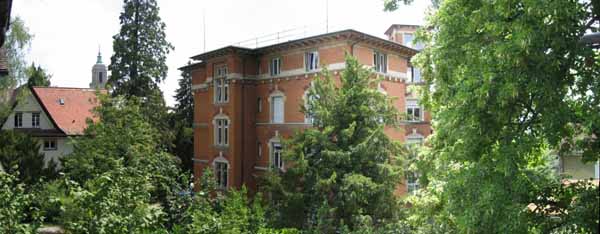
How I became a Mathematical Physicist.
My scientific outlook was shaped in Princeton and Cambridge, and later at Harvard. My student years could be characterized as a random walk beginning in experimental chemistry, and proceeding through mathematics and then to physics. As a student of chemistry at Princeton I planned to follow my father's medical profession. In the fall of my senior I received a telegram granting admission to Harvard Medical School, but at that point I made the decision to become a scientist. However my senior senior thesis provided another false start, when I unsucessfully attempted to trap free radicals within a crystal lattice. This disaster prompted my switching to theoretical science, although the following year my advisor was happy to learn that the experiment had been made to work at the National Bureau of Standards.
In spite of this false start, my Princeton teachers had recommended me to the Society of Fellows. During a brief visit to Cambridge I was enormously impressed. I lived in the Eliot Hotel in Boston, and my host was Junior Fellow Dudley Herschbach, a gracious guide, hospitible to a tee. His insights and breadth of interests made an enormous impression on me, as did dinner in Eliot House with Crane Brinton and Edward Purcell, and the other members of the Society. And when Dudley took me by his office and I spied the name "Aga Khan" on a student's door, Harvard too made a lasting impression.
But I decided as I had never travelled outside the North-American Continent, to set my heart on being a Marshall Scholar in England. I enjoyed those two years at Clare College, Cambridge enormously, and look back at them as my happiest times as a student. It was even possible to switch to study mathematics there as an undergraduate, even though I had been chosen to do graduate work in chemistry.
Toward the end of that time I became interested in the work of Kurt Symanzik, the brilliant German mathematical physicist, then at New York University. It turned out that some of my friends planned to attend a summer school in Hercegnovi, on the coast in Yugoslavia, just south of Dubrovnik, where he would be a teacher. In those days one or two major European summer schools in theoretical physics attracted a variety of interesting teachers and students from quite diverse fields. I applied to Hercegnovi school, with a special interest in the courses of Symanzik and Tulio Regge. I was just starting in theoretical physics at the time, much less experienced than most of the other students, but was admitted to attend the school as an observer.
This expereience shaped my future research orientation, although I suffered terribly from asthma and could never seem to sleep a full night, getting up about four or five each morning to walk along the beach front near my hotel. I not only cemented friendships with several of my Cambridge coherts, but met many new interesting persons. In fact this even started on the Orient Express from Paris to Trieste.
I had not reserved a seat, and to my dispair there seemed to be no unreserved, empty place. Moving with my suitcase through the train I finally spotted one seat, and quickly took it. Eventully the congenial person sitting next to me started a conversation. His name was Maurice Jacob, and he too was going to Hercegnovi, not as a student but as a lecturer. Our friendship has lasted ever since. I also had the privledge to get to know Symanzik during the school. He seemed to enjoy having dinner with students. He sometimes invited me to join him at a local restaurant where one could enjoy lamb kabob and where one avoided any uncooked salad or other food. I wondered whether he was trying to avoid one woman student who often seemed to follow him around, and eventually married to director of the school.
Other students at this school whose trajectories intersected mine many times in the future were Klaus Hepp, Derek Robinson, David Ruelle (with strong E.T.H. relations). Another student was Angus Hurst, from Adelaide. Valentine Telegdi made a big impression on the students for his style as a bon vivant. He became a professor shortly afterward in Zurich. I remember other lectures by Sergio Fubini, Jack Steinberger, Andre Martin, and Walter Thirring. The talks ranged over an enormous breadth of topics. All these talks were out-of-doors, lending a certain informality to the proceedings.
My connection with Klaus was renewed after we met again in Paris in 1964 at the I.H.E.S. He was working with Res Jost and I was a student of Arthur Wightman. The following academic year Klaus came to Princeton as a post-doctoral fellow working with Arthur Wightman, then my own teacher. Klaus became full professor at the E.T.H. while still Princeton, being one of the youngest persons in that position.
